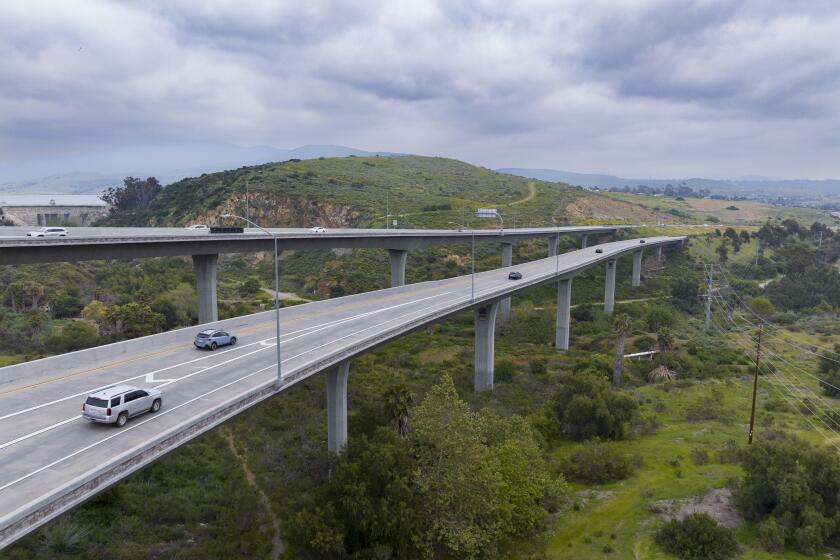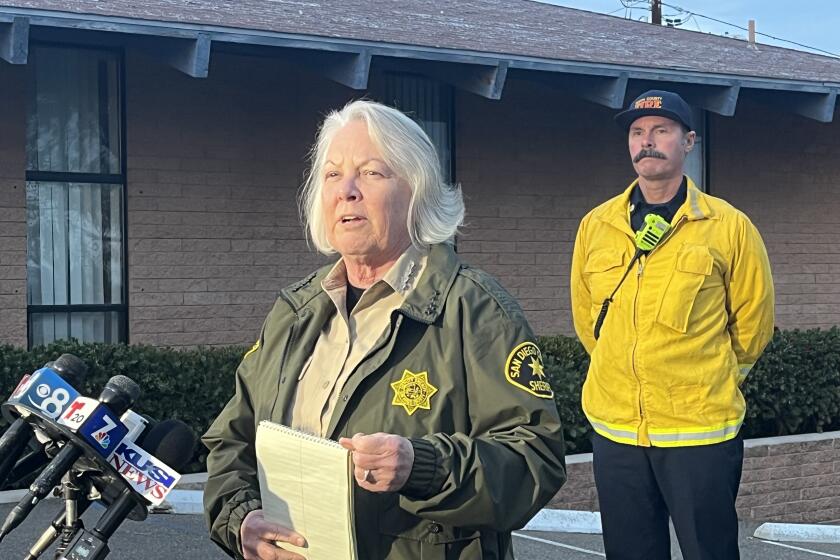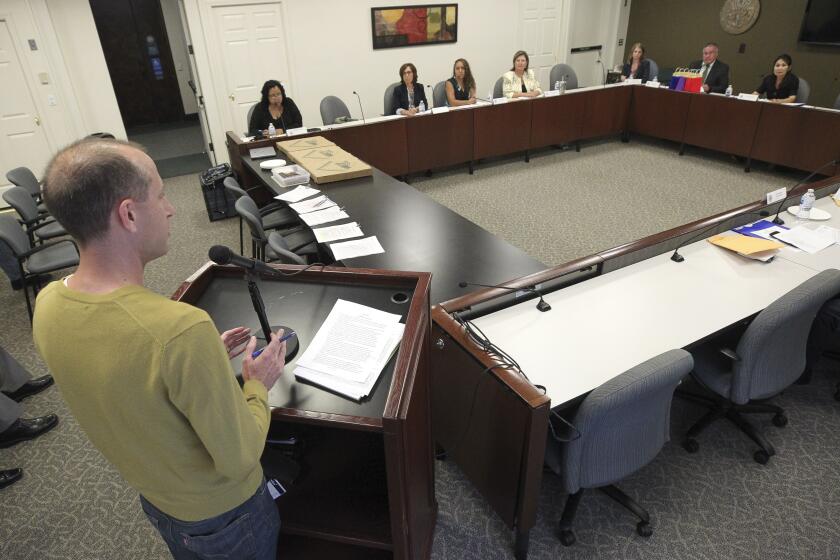Asbestos, city workers and high-rise renovations: Showdown looms in lawsuit that recalls 101 Ash St.

Dozens of plaintiffs say city officials ordered them to stay at work during dangerous asbestos contaminations
A downtown high-rise riddled with asbestos. Hundreds of San Diego city employees toiling away during a monthslong renovation. A lawsuit accusing city officials of knowingly exposing their staff to cancer-causing fibers.
101 Ash St.? Hardly.
This litigation dates back to 2019, months before city employees were moved into the former Sempra Energy headquarters on nearby Ash Street and then quickly evacuated due to repeated asbestos violations.
While lawsuits accusing the city of wrongly exposing workers to asbestos inside the still-vacant 101 Ash St. tower are still pending in San Diego Superior Court, an unrelated case raising similar allegations is just weeks away from trial.
According to the complaint filed by dozens of city workers, San Diego officials let hundreds of employees remain at work for months while construction crews renovated the city-leased property known as the Executive Complex Building, or ECB.
“The city of San Diego knew the 1010 Second Ave. building had asbestos, yet kept over 500 workers at their desks while an estimated 40 tons of asbestos-containing material was disturbed and removed,” plaintiffs’ attorney Maria Severson said.
“The city didn’t relocate its workers during the asbestos-removal process to save money and the hassle of moving them,” she added.
Before the plaintiffs get their day in court, however, the City Attorney’s Office is scheduled to argue at a hearing next week that the case should be dismissed before trial.
Lawyers for San Diego say none of the plaintiffs have developed any symptoms as a result of any alleged exposure. They also say the dispute is best settled in the state worker’s compensation system rather than in civil court.
“There is no evidence that anyone was in fact exposed at ECB to airborne asbestos,” city lawyers argued in their motion for summary judgment.
“None of the employee-plaintiffs has any medical issue that can be traced to any asbestos exposure and none has been or is being treated by any medical provider for asbestos exposure,” they added.
City lawyers also asserted that San Diego officials were not told about asbestos exposures inside the building until 2018.
The 25-story tower is not owned by the city; San Diego officials leased several floors of the property to house many of its downtown employees. The building is owned by Tower 180 Owner LLC, a limited liability company that is not named in the lawsuit.
According to an application the building owner’s contractor filed with county regulators back in 2017, the project called for removing 5,000 square feet of asbestos-containing material from the property between early August and late September of that year.
The waste was scheduled to be transported to a dump in Parker, Ariz., that is approved for the long-term storage of hazardous materials.
By late August, a superintendent with the subcontractor hired to remove the waste said in an email that the estimated amount of asbestos-containing material was 40 tons — enough to fill 10 roll-off transport containers.
He also said he expected to remove 10 tons of lead waste.
“If any questions please contact me any time,” the subcontractor said.
Only a fraction of the 550 workers then assigned to the 1010 Second Ave. high-rise joined the lawsuit, which is known as Cadena v. City of San Diego. The case involves 40 plaintiffs, including lead plaintiff Alina Cadena.
The Development Services investigator and her colleagues accuse city officials of looking the other way while they worked as asbestos floated through the air like snowflakes and settled on desks, printers and everything else.
Serious health issues
Workers say the trouble started within weeks of the construction work beginning in the summer of 2017, although city officials say they did not learn of the asbestos contaminations until early 2018.
Court records show a chain of emails written by both rank-and-file workers and at least one top official raising concerns even before the work began.
“I have been asked by (the city real estate department) to wait and see what the working conditions are like when construction begins, which I will do,” Stacey Fulhorst, then the executive director of the city ethics commission, wrote in a July 2017 email.
“That said, I am extremely concerned that the conditions will be unbearable and potentially unsafe,” she added. “Our staff is understandably concerned about being exposed to the asbestos and other potentially harmful substances during construction.”
Forty-five minutes later, Fulhorst received a reply thanking her for her note and assuring her the city was working closely with its landlord to keep everyone safe.
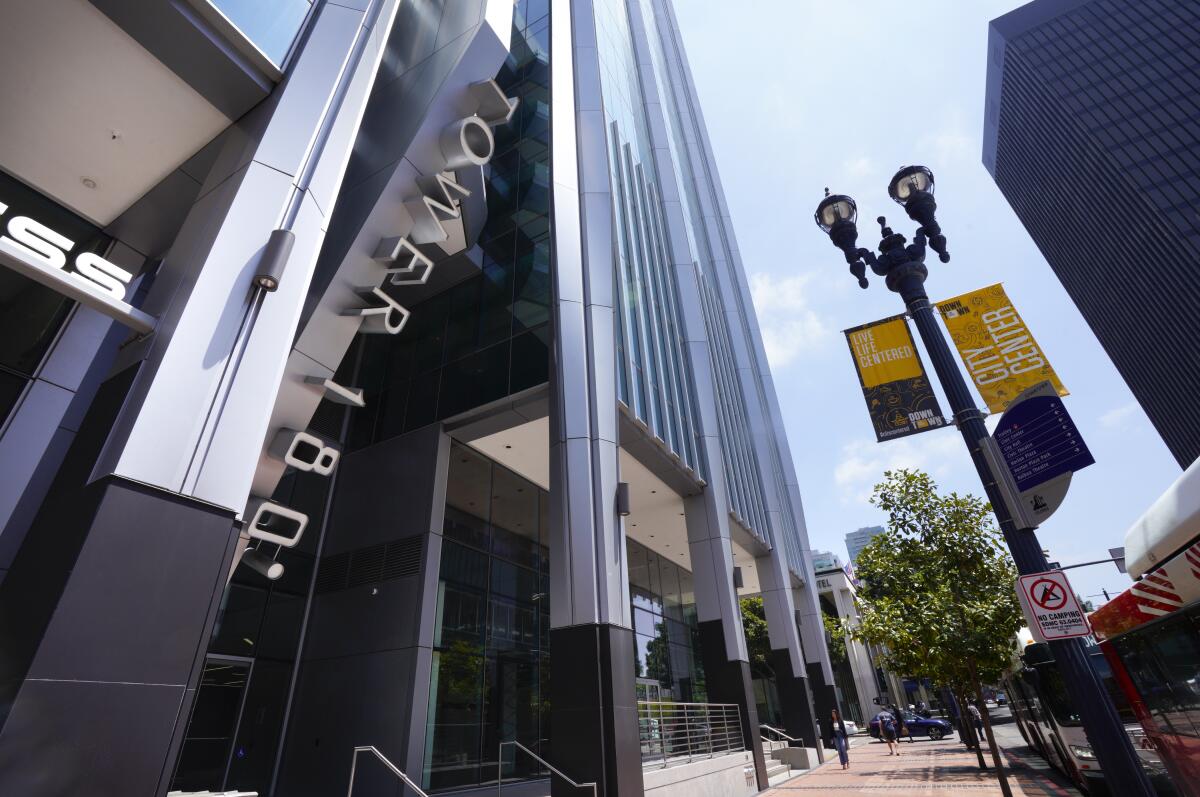
Days into the renovation, other city workers began complaining of respiratory issues, court records show. One employee sent an email in August 2017 describing symptoms being experienced by his co-workers, whose names are redacted from court files.
One person “is having bronchial/ lung issues, deep coughing,” the worker wrote. Another “is having itchy/ burning throat, hard time swallowing, coughing issues.”
Someone else “is having a hard time breathing, bronchial/ lung issues, shortness of breath from his coughing, coughing hard,” the email added. Another employee “had to take yesterday off because her breathing was bad and is now on an inhaler.”
In all, the employee cited eight separate co-workers experiencing symptoms.
“The effects are also making the office staff very tired from the stress on the body it is causing where it is difficult sleeping at night,” the email says.
The following month, another San Diego city employee sent an email asking for help resolving the difficult conditions inside the Executive Complex. He included a series of photographs showing white flakes coating his workspace.
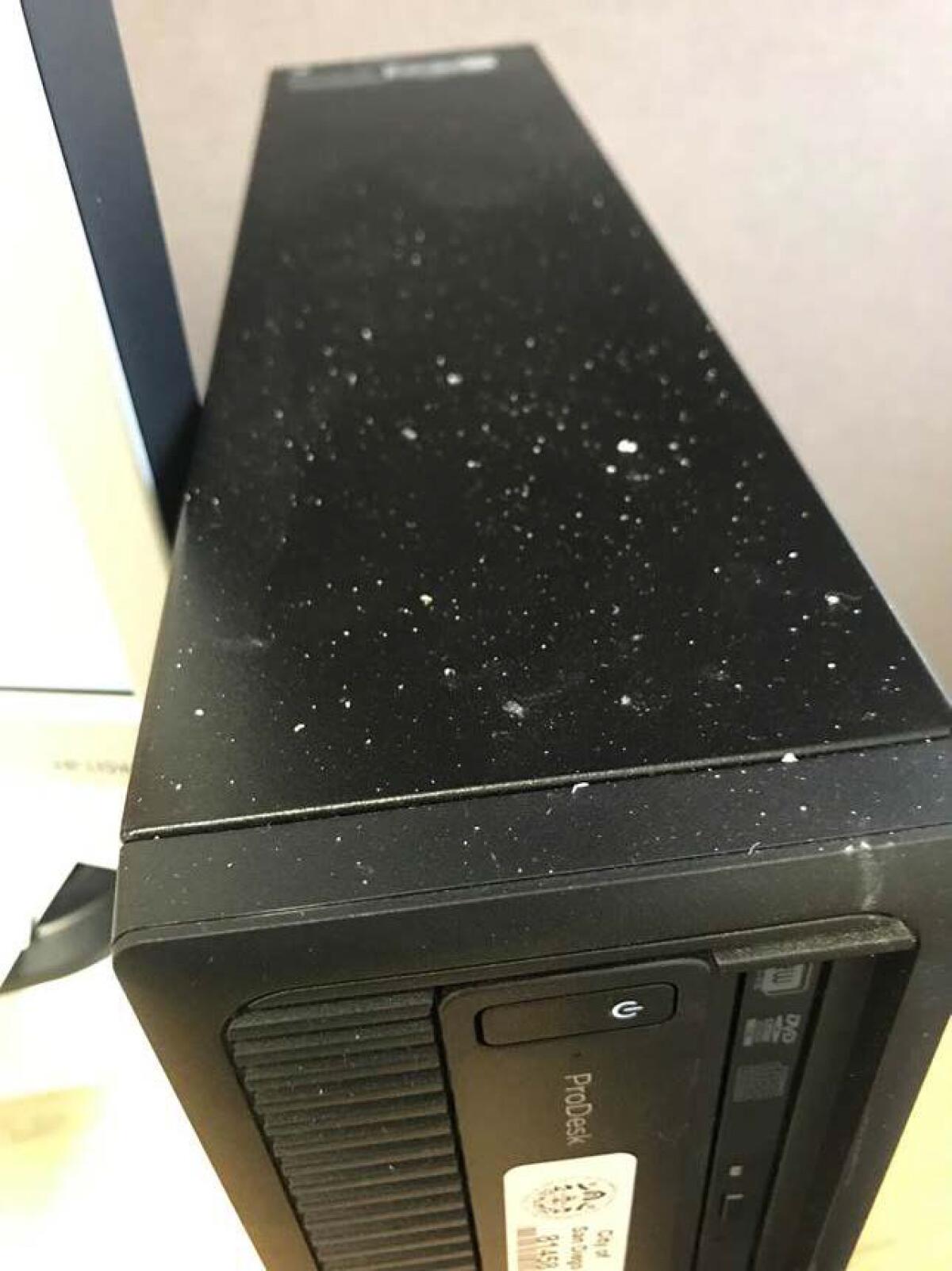
“This is the view from my cubicle,” he wrote. “I can hear the crews tearing down the windows and they are all wearing respirators/ protective masks because of the asbestos and other harmful chemicals being released during demolition.
“This lack of sealing could be letting off all of that harmful material to drift into our offices,” he added. “Can we please resolved (sic) this situation ASAP?”
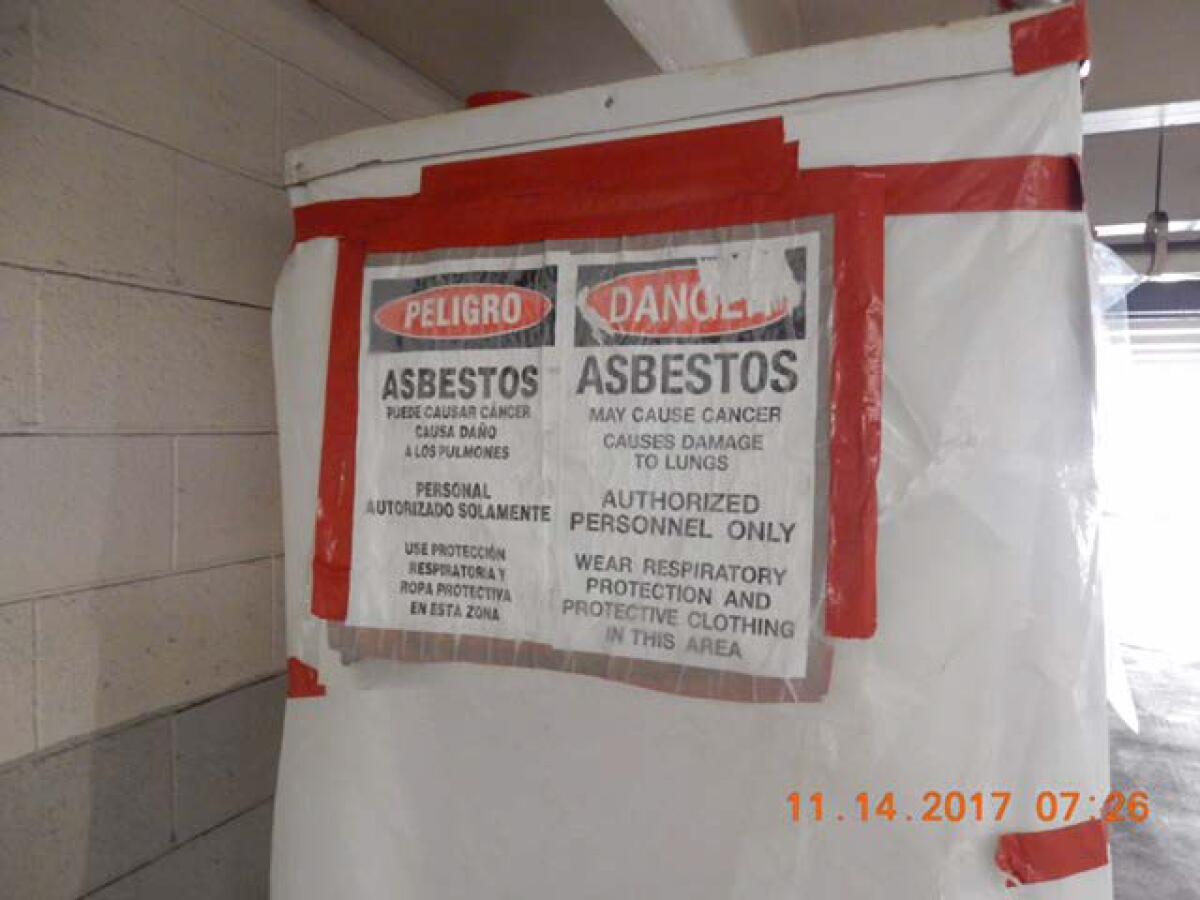
By early 2018, midway through the project, someone reported the employees’ concerns to the county Air Pollution Control District, the regional agency responsible for asbestos exposures.
County regulators inspected the site on Jan. 25 and Jan. 26, 2018, and quickly issued seven separate violations against the building owner.
According to the violations, Tower 180 Owner LLC failed to properly analyze all of the material removed by contractors, failed to remove all regulated asbestos, failed to keep asbestos adequately wet until contained or collected and handled asbestos unsafely.
The property owner’s crew also failed to properly contain the asbestos in “clear, leak-tight wrapping,” neglected to deposit the material in a timely manner and caused a public nuisance by exposing the public to asbestos, regulators wrote.
The district “remains gravely concerned for the potential of repeated and ongoing exposure of the public to the harmful asbestos debris both inside and outside of the building,” the county order said.
More than 500 San Diego city workers were immediately evacuated from the building and relocated to other sites across the city.
‘Bad financial situation’
The city’s handling of the Executive Complex renovations were strikingly similar to how upgrades inside the 101 Ash St. property were managed.
San Diego acquired the former Sempra Energy building in early 2017 and told the City Council that the building could be occupied within six months. But the construction was delayed.
By mid-2018, when the 1010 Second Ave. property was undergoing major remediation, the Faulconer administration sought and received an additional $30 million from the City Council to complete the Ash Street upgrades.
It wasn’t nearly enough.
Work inside the 101 Ash St. building was stopped by county regulators in 2019 after a series of asbestos violations.
Under increasing pressure to finish repairs to the building, which was costing the city $18,000 a day to lease even though it could not be safely occupied, the Faulconer administration pledged to open 101 Ash St. before the end of the year.
In December 2019, the city hired a DJ and hosted a party as it welcomed some 1,000 employees into the former Sempra Energy headquarters — including some who had previously worked in the Executive Complex.
But new asbestos violations issued by San Diego County forced the closure of 101 Ash St. in January 2020. It has been vacant ever since.
Aguirre & Severson, the firm representing the Executive Complex employees, also represents a taxpayer who challenged the city’s acquisition of the Ash Street office tower in 2020. That case was dismissed just before trial, in a ruling the plaintiff has appealed.
Meanwhile, the city is confronting other civil litigation filed by workers who claim they were wrongly exposed to asbestos while they were inside the 101 Ash St. building.
San Diego attorney Lawrence Shea, who represents many of those plaintiffs, settled one of those claims earlier this year. The rest are headed to mediation later this year, he said.
“With the current commercial real estate write-downs happening everywhere, this (101 Ash St.) building is a really bad financial situation for the city,” Shea said.
In its motion for summary judgment, the City Attorney’s Office said neither the Executive Complex landlord nor its contractors ever reported an asbestos release to city officials before late January 2018, when regulators issued their violations.
The motion also notes that county regulators responded to the complaints reported in early 2018.
“APCD, which investigated, admits it has no evidence that any tenant, including the city, knew of any release of asbestos before Jan. 26, 2018,” they wrote.
The hearing is scheduled for May 14 before Judge Kenneth J. Medel. If he does not grant the motion, a trial is scheduled for June 7.
Get Essential San Diego, weekday mornings
Get top headlines from the Union-Tribune in your inbox weekday mornings, including top news, local, sports, business, entertainment and opinion.
You may occasionally receive promotional content from the San Diego Union-Tribune.




